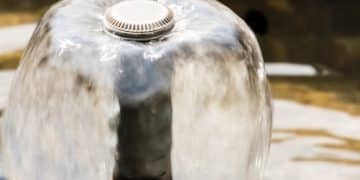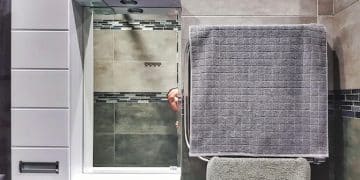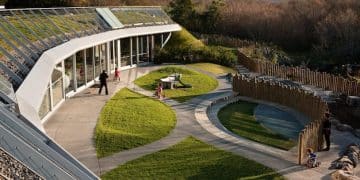The Latest Innovations in Sustainable Home Technology for 2025
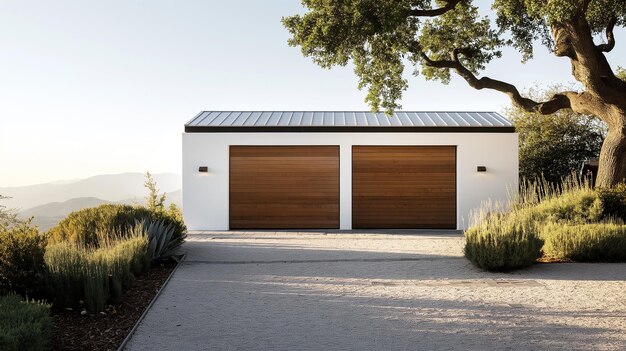
The Latest Innovations in Sustainable Home Technology for 2025 focus on energy efficiency, smart home integration, eco-friendly materials, and water conservation, creating homes that are both environmentally responsible and technologically advanced.
Embrace a greener future with the latest innovations in sustainable home technology for 2025, transforming your living space into an eco-friendly haven.
Exploring Smart Home Energy Management Systems
Smart home energy management systems represent a significant leap forward in sustainable living. These systems provide homeowners with unprecedented control and insight into their energy consumption, enabling them to make informed decisions that reduce waste and lower utility bills.
By integrating various smart devices and appliances, these systems can optimize energy usage in real-time, adapting to changing conditions and user preferences.
Benefits of Smart Energy Management
Smart energy management systems offer a range of benefits, from reducing energy consumption to improving overall home comfort. Understanding these advantages can help homeowners appreciate the value of investing in this technology.
- Real-time Monitoring: Track energy usage across different appliances and systems.
- Automated Adjustments: Automatically adjust thermostats, lighting, and other settings based on occupancy and time of day.
- Remote Control: Manage your home’s energy consumption from anywhere using a smartphone or tablet.
- Cost Savings: Lower your energy bills by optimizing usage and reducing waste.
These systems often come with user-friendly interfaces that display energy consumption data in an easy-to-understand format. Homeowners can use this information to identify areas where they can cut back on energy usage and save money.
Moreover, smart energy management systems can be integrated with renewable energy sources like solar panels, allowing homeowners to monitor their renewable energy production and consumption.
Advancements in Solar Power Integration
Solar power integration has seen significant advancements in recent years, making it more accessible and efficient for homeowners. From improved solar panel technology to innovative energy storage solutions, these developments are transforming the way we generate and use electricity.
The decreasing cost of solar panels, coupled with government incentives, has made solar power an increasingly attractive option for environmentally conscious homeowners.
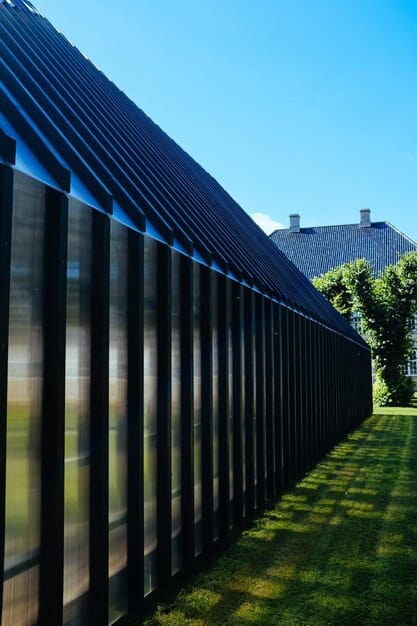
Solar shingles, for example, are designed to blend seamlessly with traditional roofing materials, providing a more aesthetically pleasing alternative to bulky solar panels. These shingles are just as durable and efficient as conventional panels, making them an excellent choice for homeowners who want to maintain the look of their homes.
Furthermore, advancements in energy storage technology, such as lithium-ion batteries, have made it possible to store excess solar energy for later use. This allows homeowners to use solar power even when the sun isn’t shining, reducing their reliance on the grid.
Emerging Solar Technologies
Several emerging solar technologies are poised to revolutionize the industry, offering even greater efficiency and affordability. These innovations include:
- Perovskite Solar Cells: A new type of solar cell that promises higher efficiency and lower manufacturing costs.
- Floating Solar Farms: Solar panels installed on bodies of water, which can generate electricity without taking up valuable land space.
- Transparent Solar Panels: Solar panels that can be integrated into windows and other building materials, turning entire buildings into energy generators.
With ongoing research and development, solar power is likely to become an even more integral part of sustainable home technology in the years to come.
These advancements not only make solar power more accessible but also contribute to a more resilient and decentralized energy grid.
Eco-Friendly Building Materials and Construction
Eco-friendly building materials and construction techniques are gaining traction as homeowners and builders alike seek to reduce the environmental impact of new construction and renovations. These materials and methods focus on sustainability, minimizing waste, and promoting healthier indoor environments.
From bamboo flooring to recycled denim insulation, there’s a growing range of eco-friendly options available to homeowners who want to build green.
Benefits of Eco-Friendly Materials
Using eco-friendly building materials offers a host of benefits, including reduced carbon footprint, improved indoor air quality, and greater durability. These materials are often made from renewable resources or recycled content, minimizing their impact on the environment.
- Reduced Carbon Footprint: Materials like bamboo and reclaimed wood sequester carbon dioxide, helping to mitigate climate change.
- Improved Indoor Air Quality: Low-VOC paints, adhesives, and sealants reduce the emission of harmful chemicals, creating a healthier indoor environment.
- Greater Durability: Many eco-friendly materials, such as bamboo and hemp, are naturally resistant to pests and moisture, increasing their lifespan.
In addition to the environmental benefits, eco-friendly building materials can also enhance the aesthetic appeal of a home. For example, reclaimed wood adds character and warmth, while bamboo provides a sleek, modern look.
Sustainable construction practices also play a crucial role in reducing the environmental impact of building projects. These practices include:
- Using modular construction techniques to minimize Waste.
- Implementing water-efficient landscaping.
- Prioritizing energy efficiency in building design.
By adopting these practices, builders can create homes that are not only environmentally friendly but also more comfortable and energy-efficient.
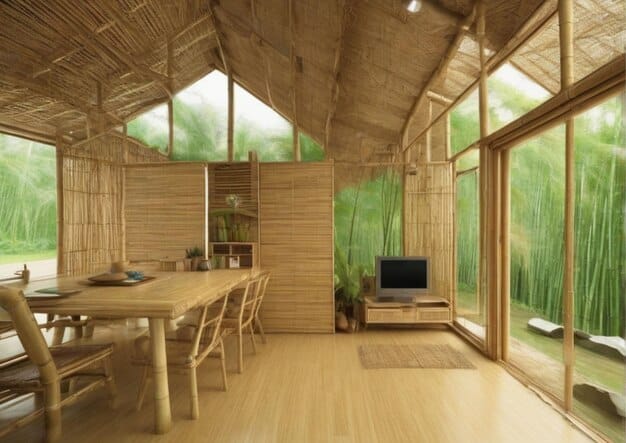
Water Conservation Technologies for the Home
Water conservation is becoming increasingly important as water scarcity becomes a growing concern in many parts of the world. Fortunately, there are several innovative technologies available to homeowners who want to reduce their water consumption and conserve this precious resource.
From low-flow toilets and showerheads to smart irrigation systems, these technologies can help homeowners save water without sacrificing comfort or convenience.
Smart irrigation systems use weather data and soil moisture sensors to determine the optimal amount of water needed for landscaping. These systems can automatically adjust watering schedules based on changing conditions, preventing overwatering and saving significant amounts of water.
Water-Efficient Appliances and Fixtures
Water-efficient appliances and fixtures are designed to use less water without compromising performance. These products are often certified by programs like WaterSense, which ensures that they meet strict water efficiency standards.
- Low-Flow Toilets: Use as little as 1.28 gallons per flush, compared to the 3.5 gallons used by older toilets.
- WaterSense Showerheads: Use no more than 2.0 gallons per minute, while still providing a satisfying shower experience.
- High-Efficiency Washing Machines: Use up to 50% less water than standard washing machines.
In addition to these technologies, homeowners can also take simple steps to conserve water, such as fixing leaks, shortening showers, and collecting rainwater for irrigation.
By implementing these strategies, homeowners can significantly reduce their water consumption and contribute to a more sustainable future.
Water conservation technologies represent a practical and effective way to address the growing challenge of water scarcity.
Smart Windows and Insulation Solutions
Smart windows and advanced insulation solutions are revolutionizing home energy efficiency. These technologies help regulate indoor temperatures, reduce energy consumption, and enhance overall comfort, making homes more sustainable and cost-effective.
Smart windows can automatically adjust their tint based on sunlight and temperature, reducing the need for air conditioning and heating.
Advanced insulation materials, such as aerogel and vacuum insulation panels, offer superior thermal performance compared to traditional insulation.
Benefits of Smart Windows and Insulation
Smart windows and insulation offer numerous benefits, including reduced energy bills, improved indoor comfort, and enhanced home value. These technologies are a worthwhile investment for homeowners looking to create a more sustainable and efficient living space.
- Reduced Energy Bills: By regulating indoor temperatures, smart windows and insulation can significantly reduce the amount of energy needed for heating and cooling.
- Improved Indoor Comfort: These technologies help maintain a consistent temperature throughout the home, eliminating drafts and hot spots.
- Enhanced Home Value: Energy-efficient homes are becoming increasingly desirable to buyers, making smart windows and insulation a valuable selling point.
In addition to these benefits, smart windows and insulation can also contribute to a healthier indoor environment. By reducing the need for air conditioning, they can help minimize the circulation of dust and allergens, improving indoor air quality.
The integration of these technologies can transform homes into energy-efficient havens, reducing environmental impact and enhancing the quality of life for residents.
These innovations represent a significant step forward in sustainable home technology.
The Role of Smart Appliances in Sustainable Homes
Smart appliances are playing an increasingly crucial role in creating sustainable homes. These appliances are designed to be more energy-efficient, reduce water consumption, and minimize waste, helping homeowners live more sustainably without sacrificing convenience.
From smart refrigerators that track food inventory to washing machines that optimize water usage, these appliances are packed with features that promote sustainability.
Smart refrigerators, for example, can help homeowners reduce food waste by tracking expiration dates and suggesting recipes based on available ingredients. This not only saves money but also reduces the environmental impact of food production and disposal.
Features of Smart Appliances
Smart appliances come with a variety of features that promote sustainability, including:
- Energy Monitoring: Track energy consumption and identify areas where you can save.
- Remote Control: Manage your appliances from anywhere using a smartphone or tablet.
- Automated Adjustments: Automatically adjust settings based on usage patterns and environmental conditions.
Furthermore, smart appliances can be integrated with smart home energy management systems, allowing homeowners to optimize their energy usage across all devices.
By investing in smart appliances, homeowners can take a significant step towards creating a more sustainable and eco-friendly home.
The integration of smart appliances into homes represents a transformative shift towards sustainable living.
| Key Feature | Brief Description |
|---|---|
| 💡 Smart Energy Management | Optimizes energy usage in real-time, reducing waste and lowering utility bills. |
| ☀️ Advanced Solar Integration | Includes solar shingles and improved battery storage for greater energy independence. |
| 💧 Water Conservation Tech | Low-flow fixtures and smart irrigation reduce water consumption significantly. |
| ♻️ Eco-Friendly Materials | Use of materials like bamboo, reclaimed wood, and recycled insulation. |
FAQ
▼
Smart home energy management systems offer real-time monitoring, automated adjustments, remote control, and significant cost savings by optimizing energy usage and reducing waste.
▼
Solar shingles blend seamlessly with roofing materials for a more aesthetically pleasing look, while still providing the same durability and efficiency as conventional solar panels.
▼
Examples include bamboo flooring, reclaimed wood, recycled denim insulation, and low-VOC paints, adhesives, and sealants, all contributing to a healthier and more sustainable home.
▼
Smart irrigation systems use weather data and soil moisture sensors to determine the optimal amount of water needed, preventing overwatering and saving significant quantities of water.
▼
Smart windows automatically adjust their tint based on sunlight and temperature, reducing the need for air conditioning and heating, and improving overall energy efficiency.
Conclusion
As we look towards 2025, the integration of the latest innovations in sustainable home technology is becoming increasingly essential for creating eco-friendly and energy-efficient living spaces. From smart energy management systems and advanced solar power integration to eco-friendly building materials and water conservation technologies, these advancements offer homeowners practical and effective ways to reduce their environmental impact while enhancing their quality of life.
